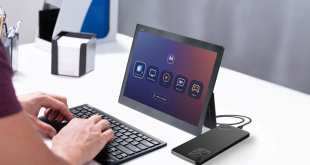Google has officially announced a massive redesign of its Gmail email service in an effort to make it more appealing to business users.
While Gmail is already the world’s most popular email service with 1.4 billion users, the company is hoping that new features such as email snoozing, nudging, and confidential mode will attract over many businesses that have been tied for years to Microsoft Outlook.
But it’s not just new user features that Google has added. Google says that it has entirely restructured its email storage databases, unified three dueling systems for syncing messages across devices and upgraded computers underpinning the service.
There’s also been a shift to Google’s self-developed Tensor processing chips which enables smart-assistant features such as “suggested replies” to messages and “nudges” to respond to forgotten emails.
The redesign of the service is, in the words of Gmail lead product manager Jacob Bank, about "making people safer and more productive".
Safety is being considered as a key pillar of the new Gmail, with a new confidential mode. This new feature allows senders to set an expiration date on an email, or revoke it entirely – things which may seem familiar to Outlook users. However, Google is being a bit more sophisticated than simply sending a recall email. Confidential mode works by not actually sending said content, but rather a link to the content which lives in your own mailbox and is accessed either via the recipient’s Gmail account or https. Both scenarios see the sender entirely in charge of how long that confidential content is available.
Another new business-like feature that is going to be available to all users is integrated rights management (IRM), which allows users to block the forwarding, copying, downloading or printing of messages should the sender desire.
There’s also the introduction of two-factor authentication (2FA) for messages, being included in the confidential mode. Users can request that the recipient authenticates with a passcode received via text.
A big feature that will be appealing to businesses is a greater focus on offline access to email, a long-standing achilles heel for Gmail. A robust native offline mode is catering for users who travel a lot and who “want to be able to take their standard Gmail tab offline and work in the same UI,” says Bank.
But this wasn’t a simple switch, Bank notes that “a rewrite of the entire technical stack of Gmail was required to make this possible.”
This is the biggest set of changes that Google has ever made to Gmail in one update, but the company has been wary of alienating any sides of its user base. The company wants to ensure that both its everyday users remain happy, while the service simultaneously does enough different to entice in a new set of business users. Whether Google has done enough to steal any business away from Microsoft remains to be seen.
 PCR Tech and IT retail, distribution and vendor news
PCR Tech and IT retail, distribution and vendor news



